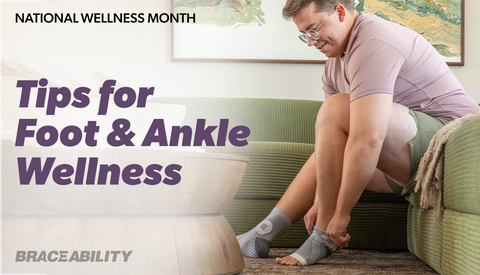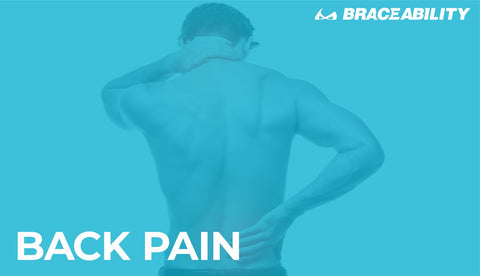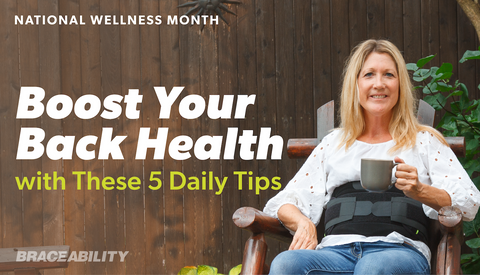Post-Surgery Tips: Heal Your Back, Knee, Foot, Ankle & Shoulder Faster
Recovering Well After Surgery: Expert Tips Back, Knee, Foot/Ankle & Shoulder
Recovery after surgery isn’t just about waiting for the site to heal. It’s about protecting the area, managing pain, moving safely, and creating the right conditions for your body to rebuild strength. While every person’s journey is unique, there are common strategies recommended by medical professionals that can make recovery more comfortable.
In this guide, we’ll cover the universal principles of post-surgery healing, spotlight unique considerations for the back, knee, foot/ankle, and shoulder, and highlight braces and supports that can help you feel more confident along the way.
Always follow your surgeon’s instructions and speak with your healthcare team before adding or changing any recovery tools.
Core Principles of Post-Surgery Recovery
No matter what procedure you’ve had, these strategies are commonly recommended by doctors and physical therapists to help you stay on track:
-
Gentle movement: Begin light walking or mobility work once cleared. Even small steps can prevent stiffness, improve circulation, and speed recovery.
-
Pain and swelling management: Alternate ice and heat as directed, and use compression or elevation to help control inflammation.
-
Sleep and rest: Prioritize sleep and use pillows or props to protect the surgical site. Good rest is essential for tissue repair.
-
Nutrition and hydration: A diet rich in protein, vitamins, and minerals supports healing. Staying hydrated helps maintain tissue elasticity and circulation.
-
Daily living adaptations: Make your home recovery-friendly with ergonomic chairs, safe footwear, mobility aids, or clothing that avoids strain.
-
Bracing and supports: When prescribed, braces can keep healing tissues safe and reduce the risk of setbacks while you regain confidence in movement.
What Experts Say About Recovery Timelines
Depending upon the procedure, surgical recovery typically spans stages from days to weeks to months, sometimes longer, so the following phases may vary, but the principles are the same. According to the Joint Institute, “recovery after orthopedic surgery can typically last six months to a year” but “everybody recovers at their own pace.” (Joint Replacement Institute)
Phase 1: Immediate and Early Recovery (Days to Weeks)
-
The first 48 hours are often the hardest: swelling, pain, restricted mobility, and the body beginning its initial repair phase. Victory Therapy & Wellness describes this as a period focused on “rest and protection,” with adherence to wound care, pain management, and following your surgeon’s orders being crucial to avoiding complications. (Victory Therapy & Wellness)
-
In the first week, gentle movement, light physical therapy if cleared, begins. This helps prevent stiffness and supports circulation. (Victory Therapy & Wellness)
Phase 2: Weeks 2–6 – Rebuilding Motion & Strength
-
As swelling diminishes and wounds are more stable, you’ll typically begin structured physical therapy to regain range of motion, mobility, and light strength. The Understanding Orthopedic Surgery Recovery guide notes that around this time patients often resume more daily activities under guidance. (Victoria Orthopedic Center)
-
This period is critical for preventing joint stiffness, muscle atrophy, and building the foundation for later phases.
Phase 3: Months 2–6 – Regaining Independence
-
During this time many patients move from aided movement to more independent mobility. Activities increase in intensity, and the brace or support may be scaled back. (Victory Therapy & Wellness)
-
It’s often where “normal” daily tasks are gradually resumed, though high-impact activities and heavy lifting are still usually deferred.
Phase 4: Months 6 to 12+ - Long-Term Strength, Function, Full Recovery
-
Full recovery often takes six months to a year, especially after major or complex surgeries (e.g. joint replacement, multi-ligament repair). Orthopedic Surgery Recovery Tips: What to Expect stresses that success depends on consistency, rehab, and following medical guidance. (Joint Replacement Institute)
-
Even after you feel “back to normal,” internal strength, endurance, flexibility are still improving. Surgeons and PTs often remind patients that peak performance and full comfort may continue to increase slowly.
The Mental Side: Motivation, Mindset & Managing Expectations
Healing isn't purely physical: mindset, patience, and mental resilience play big roles. Experts often emphasize this:
-
From Spine Center Atlanta: “A realistic recovery timeline depends on the procedure, age, and pre-existing health conditions.” Knowing this helps set expectations so you don’t feel frustrated when progress seems slow. (Spine Center Atlanta)
-
Mental fatigue, anxiety, and frustration are common, especially in the early phases when mobility is low and pain or swelling high. Recognizing them, speaking with your care team, or leaning on support networks (family, friends, a therapist) helps.
-
Celebrating small wins matters: each milestone (first time walking without support, first pain-free sleep, regaining a range of motion) builds confidence. This helps people adhere to rehab and use braces or supports as prescribed.
The Role of Bracing in Recovery
Before diving into specifics, it’s worth highlighting why bracing can play such a valuable role in healing. Medical experts note that braces:
-
Stabilize joints and protect repairs by limiting harmful movements. (Lokmanya Hospitals)
-
Reduce pain and swelling through immobilization and compression.
Boost patient confidence, making it easier to move safely during early recovery. -
Support rehab by redistributing load and protecting weakened tissues as strength returns. (Cascade Orthopedics)
-
As Dr. Michael Behr from Piedmont explains, a brace “helps the symptoms and provides peace of mind” during knee recovery. (Piedmont Healthcare)
The key takeaway: braces aren’t a substitute for rehab, but they are powerful support tools that make recovery safer and more comfortable.
Spotlight on Specific Recovery Areas
While those principles apply broadly, each surgical site has its own unique challenges and best practices.
Back Post-Op/Surgery Recovery
After back surgery, protecting your spine is critical. Avoid twisting, bending, or lifting heavy objects. A lumbar brace can help limit these motions and encourage upright posture. Focus on short, frequent walks and use ergonomic chairs to reduce strain when sitting.
Explore our collection of Post-Op Back Surgery Braces designed to stabilize the lumbar spine, reduce pressure on healing tissues, and provide all-day comfort.
Knee Post-Op/Surgery Recovery
Knee recovery depends on regaining safe motion without destabilizing the joint. Early on, you may need a brace that locks or limits movement to protect the repair. Over time, lighter hinged braces can provide stability as you rebuild strength. Don’t rush back into high-impact activities, gradual progression is key.
Browse our Post-Op Knee Surgery Braces, which include hinged and range-of-motion (ROM) braces to support each stage of your recovery.
Foot & Ankle Post-Op/Surgery Recovery
Strict weight-bearing rules often follow foot or ankle surgery. Post-op shoes and boots are essential during this phase, keeping weight distributed properly and limiting harmful movements. Look for wide, adjustable designs that accommodate swelling and provide a stable base.
Check out our Post-Op Shoes, built to protect surgical sites, reduce pain while walking, and ease the transition back to normal footwear.
Shoulder Post-Op/Surgery Recovery
Shoulder recovery requires protecting delicate repairs while maintaining as much comfort as possible. Slings or immobilizers limit overhead or rotational motion, while pillows and supports can improve sleep positions. As you heal, certain braces allow safer arm use during light activity.
See our Shoulder Surgery Recovery collection, featuring immobilizers, slings, and braces that reduce strain while supporting daily movement.
Final Thoughts on Post-Op Recovery Tips
Recovering from surgery takes patience, discipline, and the right support tools. While your doctor and physical therapist guide your treatment plan, braces and recovery gear can provide comfort, stability, and confidence at every stage.
-
Braces stabilize and protect surgical sites.
-
Supports ease daily activities and improves comfort.
-
Proper recovery gear helps you heal safely while keeping you active within limits.
Always check with your healthcare provider about which brace or support is right for you. With the right plan, and the right gear, you’ll set yourself up for the smoothest recovery possible.














